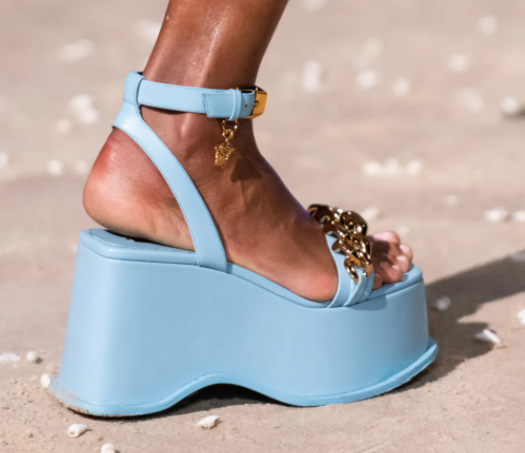When thinking about indicators of the economy, heels might be the last thing you’d look to. But from hemlines to lipstick, fashion trends have long been indicators for the economic climate.
Historically, there is a correlation between heel size and the state of the economy: the height of women’s shoes increases during periods of crisis.
High heel pumps and platforms replaced the low-heeled flapper shoes of the 1920s during the Great Depression. The 1970s oil crisis revived platforms again, reversing the preference for low-heeled sandals in the late 1960s. The low, thick heels of the 1990s grunge period gave way to stilettos following the dot-com bubble burst at the turn of the century.
More recently, the 2008 recession brought on a rise in the popularity of heels.
Between 2008 and 2010, the most influential bloggers wrote consistently about heels that ranged in height from five to eight inches. The Lita platform boot from Jeffrey Campbell gained so much popularity that it came in 164 different colors and 65 different styles.
But by 2011, bloggers were writing about the return of the kitten heel from designers Jimmy Choo and Christian Louboutin.
Why does a lower economy cause higher heels?
“Usually, in an economic downturn, heels go up and stay up — as consumers turn to more flamboyant fashions as a means of fantasy and escape,” said Trevor Davis, a consumer product expert with IBM’s Global Business Services, in a press release.
In 2010, Elizabeth Semmelhack, author of “Heights of Fashion: A History of the Elevated Shoe,” told CNN “We have entered a moment of heightened impracticality in footwear.”
In the wake of the 2007-2009 recession, she attributed heel’s re-emergence to “a greater need for escapism.”
When you think about it, escapism has been a popular way to forget about economic hardships in the past.
During the 1920s, movie attendance soared. Throughout the 1930s and the Great Depression, the movie business was at the peak of its influence.
Besides escapism, buying ridiculous shoes and other goods during hard financial times is a coping mechanism. During the COVID-19 pandemic, more and more people have bought luxury goods.
The future of heels
“While there’s no denying low-heeled and flat shoes have won the latest popular vote, it would be foolish to count high heels out of the race,” said Noelle Sciacca, editorial lead of luxury consignment store The RealReal, in an interview.
“Historically, following periods of social hardship or economic downturn, it is typical to see a social reaction against these shared experiences,” said Celenie Seidel, senior womenswear editor at Farfetch, in the same interview. “It is feasible that in the wake of 2020’s global pandemic, we will see people striving to have fun with fashion again.”
Recently, the return of higher heels has coincided with the pandemic. Chunky sneakers, platform sandals, and block heels designed in 2020 have taken over high-end fashion. 2021 spring and summer collections from Versace and Vivienne Westwood feature towering shoes.
However, the high heel phenomenon has spread past luxury fashion. Fast fashion shops like Forever 21 also sell higher heels, making this trend available to every type of shopper.
Changes in fashion— like heel height, lipstick, and hemlines– might appear irrelevant at first. Nonetheless, trending fashion is a direct reflection of the state of the world.

Hi! My name is Marie, and I am the editor-in-chief of The Mycenaean. I am also President of Model UN and President of Quill and Scroll Honor Society. I love whitewater kayaking and rollercoasters.

Leave a Reply